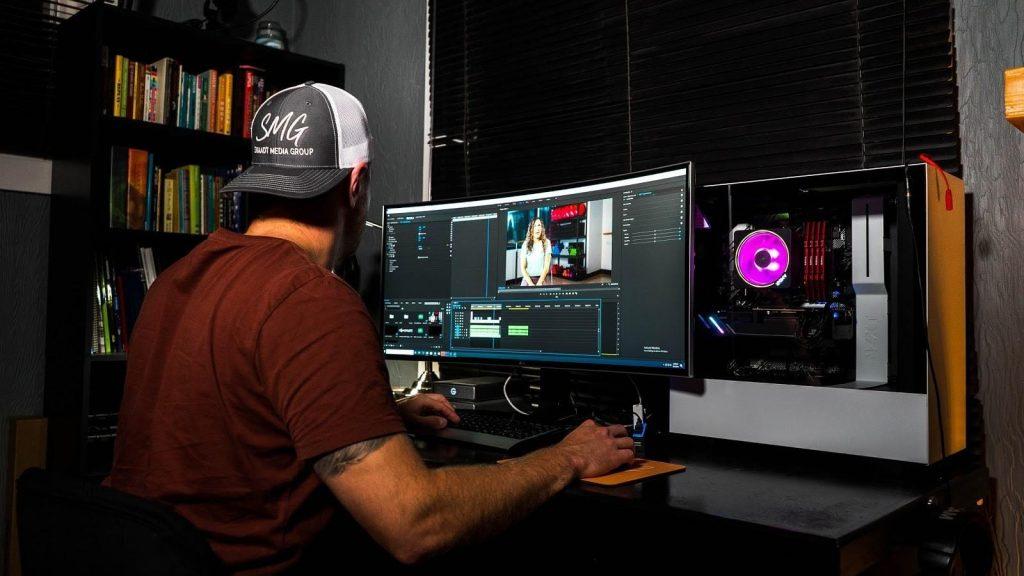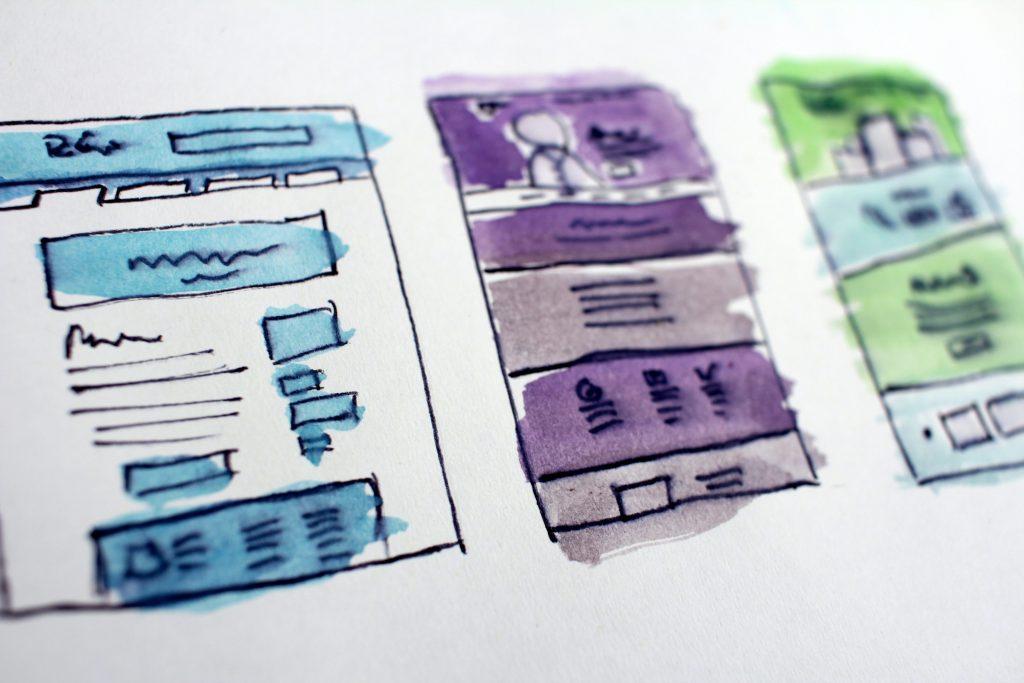Anyone who has tried to enter the world of freelance work – web design, general graphic design, copywriting, or any other speciality – would agree that getting started in the first place is the biggest challenge. And for new freelancers, it is often more difficult because they can’t get work without showing that they have already gotten work.
But what if there was a simple solution that worked for newcomers and experienced professionals alike? A compelling online portfolio is one of the best tools for convincing potential clients that you can meet their needs.
What makes an effective online portfolio? Here are a number of considerations to keep in mind when planning it out.
Make sure clients can find you
Whether you choose to build your own website or submit your portfolio to one of the many freelancing websites, you need to make sure that your portfolio is quickly accessible.
For creatives that build their own website, SEO optimization is a must. If you are not well-versed in SEO, well, ironically, there are plenty of freelancers out there who can help you.
Ultimately, your clients can’t hire you if they can’t find you. This is one of the most important tips to remember when building your portfolio.
Grab the client’s attention…
Once a potential client arrives at your portfolio, you need to make them stay long enough to decide to hire you. So create a landing page that makes people take notice. Whether you decide to have vivid animations, stunning graphics or simply a unique pitch, you need a visual hook.
…but avoid being visually distracting
Avoiding visual distractions is just as important as being visually engaging, if not more so. Sites that are too busy, have too many conflicting patterns or use excessive motion can lead potential clients to flee towards calmer sites.
Balancing the amount of imagery and animated content on your site requires skill and effort. But you can use your own sensibilities as a starting point – if you find something distracting, others will too.
Prominently feature your brand
You are building a brand for a reason. Take every opportunity you can to reinforce it.
Your brand can be the best advertising on your site. Present a client with a well-designed and thought-out brand, and they will have a greater trust in your abilities while reviewing the rest of your site.
Leverage your speciality
Prospective clients don’t typically just perform several random searches, hiring anyone interesting that pops up. Instead, they arrive at your site with very specific needs in mind.
As the saying goes, trying to be a jack of all trades often makes you master of none. Potential clients aren’t generally seeking someone who is just okay at a lot of things; they want someone who is outstanding at doing the one thing they really need.
As a freelancer, you have likely developed expertise in a particular area. Focus on your expertise in your portfolio and minimize the amount of space devoted to other skills. If you really are an expert in a lot of different areas, consider having separate portfolios for each skillset.
Carefully select which work you display
This tip applies the principle of less is more. Be very selective when choosing projects or samples for your portfolio – highlighting projects that have been particularly successful or for which clients have given you outstanding feedback.
Information overload is a problem for everyone, and potential clients are no exception. Limiting the number of samples you display also limits opportunities for a viewer to find something that they personally don’t like, thereby diminishing the effectiveness of your best pieces.
Really, it’s a game of Show and Tell
Many freelancers are content to rely solely on images of their work in their portfolios, but this wastes an opportunity. Accompanying stunning graphics with compelling stories about projects gives a potential client a more complete feel for how well you could work together, and more importantly, more reason to hire you.
If you don’t have enough paid work, make some
So how do new freelancers address the problem of not having paid work to rely on for their portfolio? It’s easier than you think – if you don’t have the specific examples the client is looking for, create some.
Creating content gives potential clients a sample of your work they can review for quality. But perhaps more importantly, it shows that you are willing to go the extra mile to be valuable. By spending your own time to give clients a useful sample, you give them confidence that you will go the extra mile for them as well.
This works for all types of freelancers, whether graphic designers or copywriters. I can tell you from personal experience that I got my first freelance job by offering a client content created solely for the purpose of getting the job.
Be very upfront about the fact that you created the work for your own purposes. You should never suggest that someone commissioned work if they didn’t.
Show what others think about your work
You should include testimonials and reviews in your portfolio when you can. But remember. That not all testimonials are created equally.
Generic statements that you did good work are unlikely to sway a prospective client. Make sure that any testimonials you present on your site contain substantive feedback about your work habits or the quality of the final work product.
Let the viewer know how to reach you
Clients should not have to hunt to figure out how to reach you if they want further information or, indeed, want to hire you. Your landing page should display your contact information – including e-mail, phone and social media contacts – prominently, making it easy for clients to immediately get in touch with you.
Make it easy for the viewer to navigate your site
When it is not obvious from your site how the viewer should find information, it is crucial to provide instructions. If a user can’t easily navigate a site, they are not going to stay long enough to hire you.
Take Samual Day’s website as an example. His landing page includes an element with specific instruction to the viewer that they need to scroll to get more information.
Make sure your site is fast and responsive
This goes hand-in-hand with the requirement that your site shouldn’t be distracting. If your site takes forever to load, you will never get clients to stay long enough to hire you.
Most visitors will not wait more than two seconds for your page to load. Make sure that any special effects on your portfolio landing page – including animations, video and pictures – do not slow it down to a point where potential clients will just leave.
Keep your portfolio up-to-date
Make sure you refresh your content frequently. Why would a client hire you if your portfolio looks like it was made five years ago and doesn’t have any recent projects on it?
In keeping your content fresh, you need to keep up with current trends. Updates should not only include adding new projects, but also should include refreshing the overall design of your portfolio.
And it goes without saying that you should always update your contact information as soon as you can. Remember the most important rule – the client can’t hire you if they can’t find you.
Get help if you need it
There are many elements of designing a portfolio where you may need help. Perhaps you aren’t the best at creating logos, or perhaps you need some help with site optimization – whatever your need, someone is available to help.
Keep your overall budget in mind as you build your portfolio, as when developing a new site, you can expect to pay $50 to $75 per hour for a graphic designer. Investing in building the best portfolio possible will likely pay for itself in no time.
Provide free value
Last but not least, never underestimate the power of a giveaway. After all, who doesn’t like a freebie every now and then? Providing value doesn’t just mean that you have to offer concrete giveaways. Well-written blogs with useful information can be just as valuable, if not more so, to a potential client as free sample images or other giveaways.
Conclusion
Freelancing is very competitive and freelancers need to distinguish themselves from the crowd. Well-designed online portfolio experiences are one of the best ways to draw in a client and convince them to hire you. It’s as simple as that.
Are there portfolios you have found particularly compelling, or other suggestions you have for building a portfolio that makes clients hire? Share your examples below.




